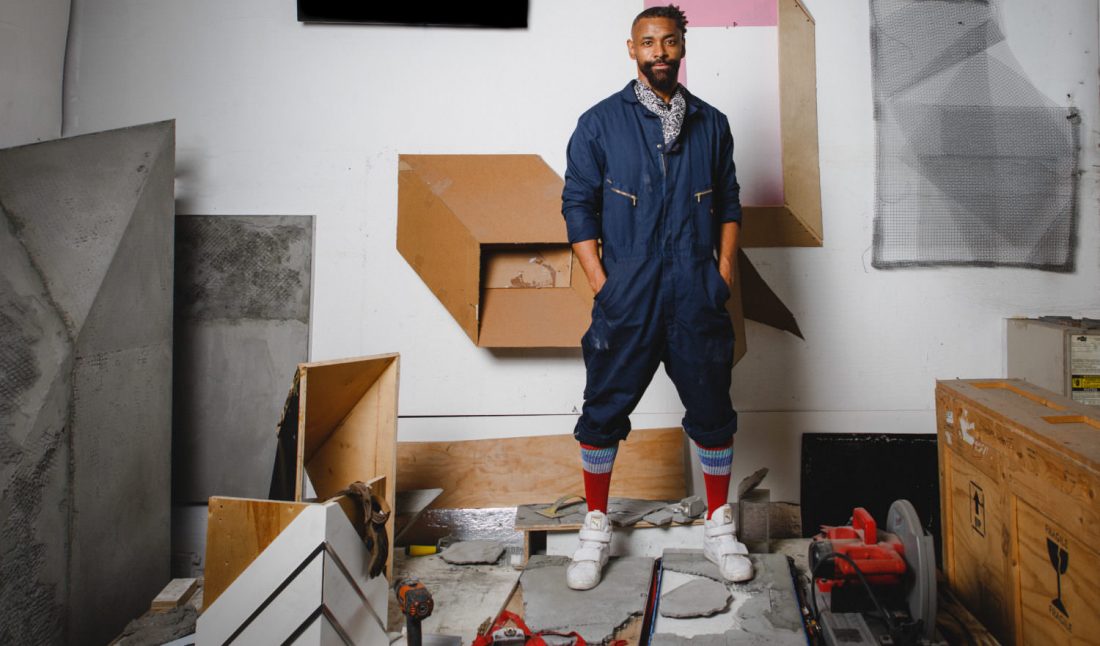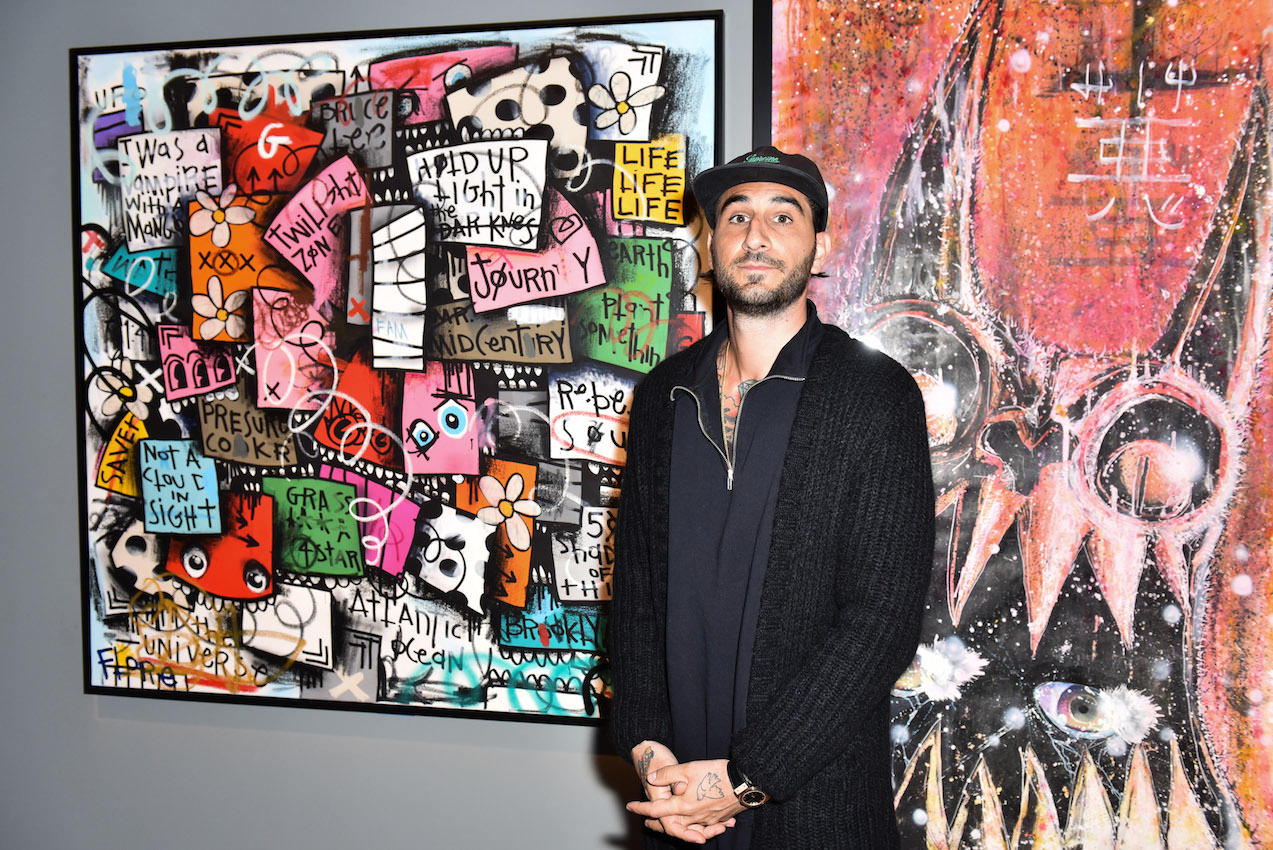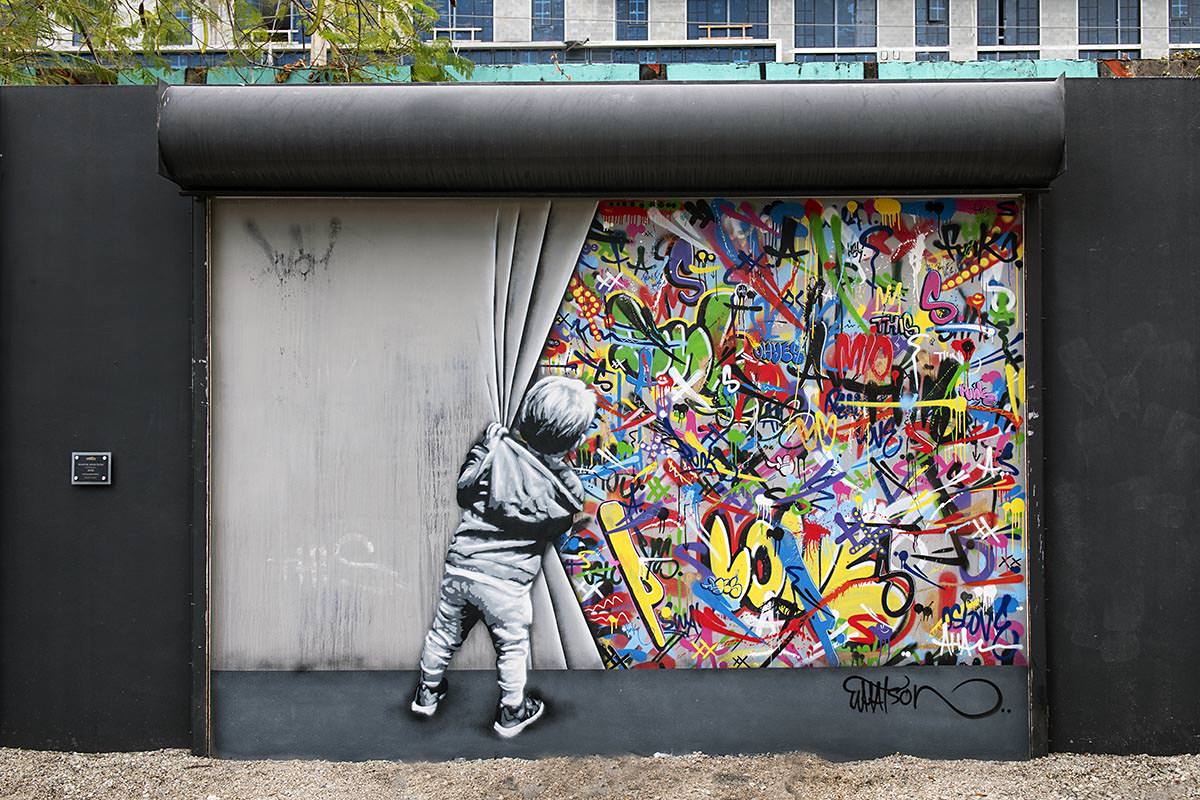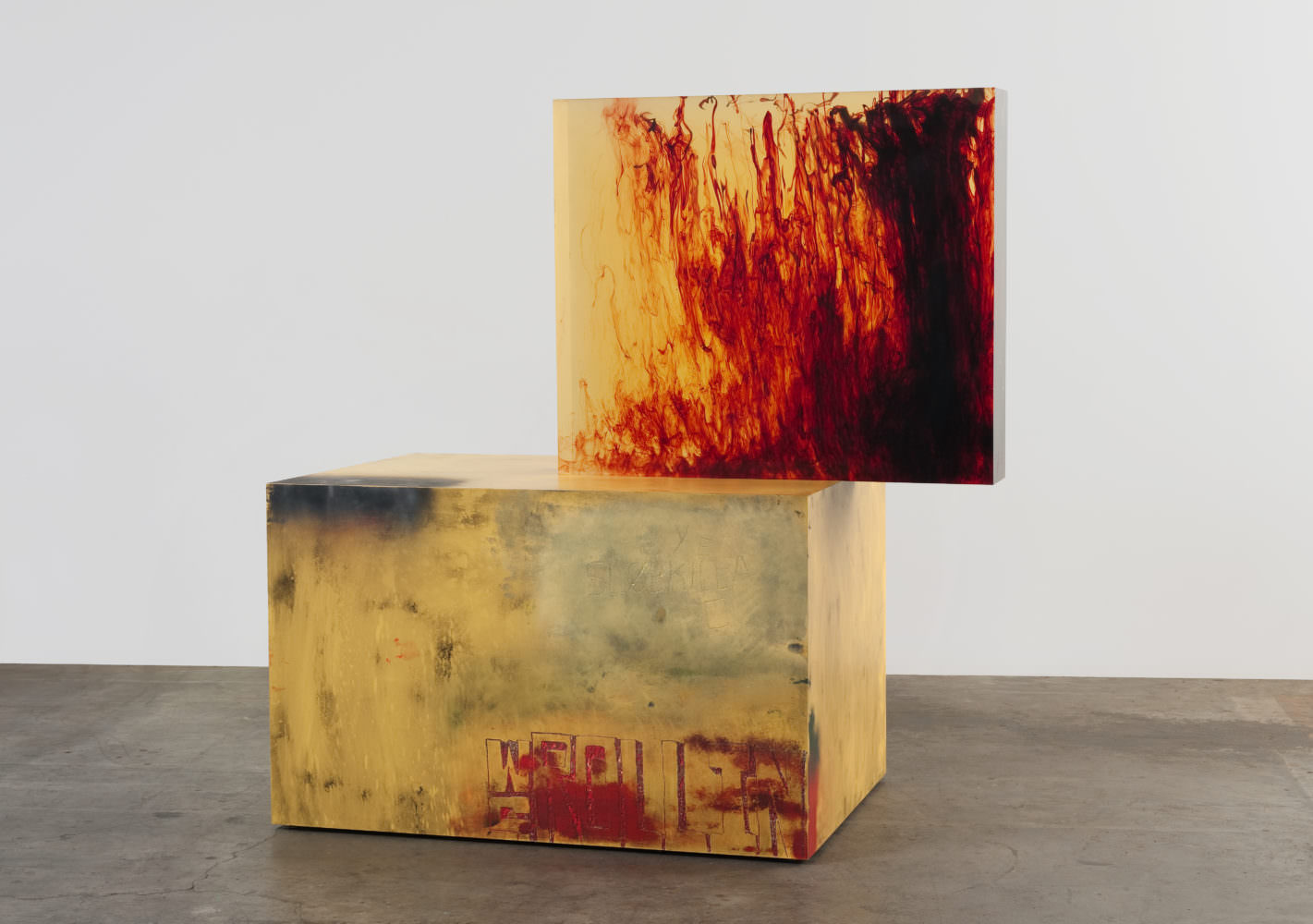Several years ago, after reaching out via social, the CEO of Goldman Properties and co-founder of Goldman Global Arts, Jessica Goldman Srebnick, visited Troy Simmons’s studio. Out of his space in the Bakehouse Art Complex in Wynwood (the same neighborhood Goldman Properties has transformed with the now highly captured Wynwood Walls), the artist has created sculptural wall pieces in materials typically found in construction—concrete and steel— juxtaposed with brightly colored cutouts.
“I had seen an image of his work on Instagram and was completely intrigued,” Goldman Srebnick told Whitewaller recently. “What drew me was the balance of vibrant color mixed with the grittiness of concrete. It was innovative. I was hooked.” Almost immediately, she knew he needed to collaborate with her firm on their next building. This winter, the 2200 block of Wynwood will reveal a facade by Simmons.
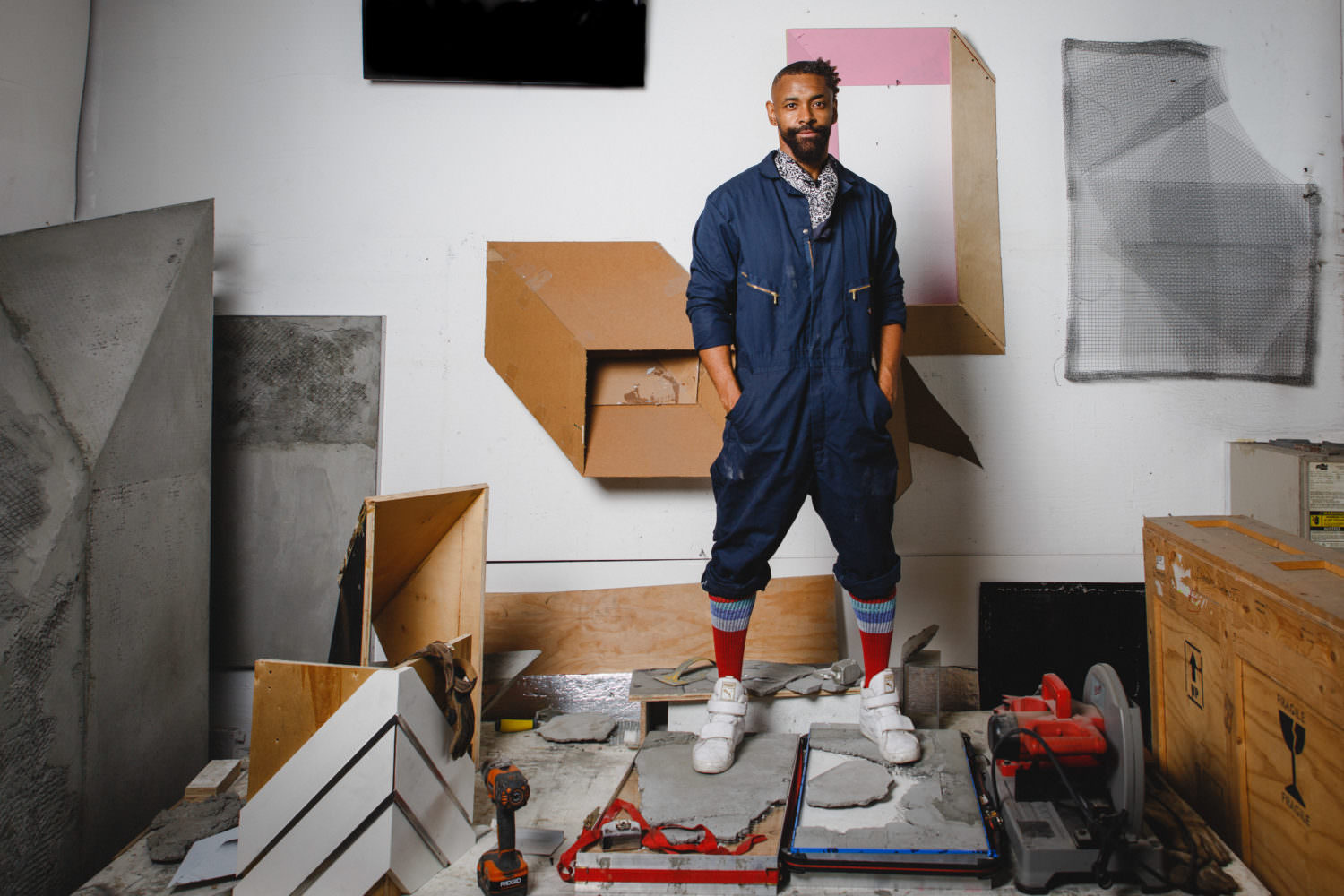 Photos by Anton Kirindongo
Photos by Anton Kirindongo Courtesy of Troy Simmons.
“Troy’s art form would contribute and set the tone for the artistic evolution of the Wynwood neighborhood. It was the perfect marriage of art and architecture. Troy was the perfect artist to make that happen and Goldman Properties the perfect collaborator,” said Goldman Srebnick.
Whitewaller spoke with Simmons about the collaboration and more.
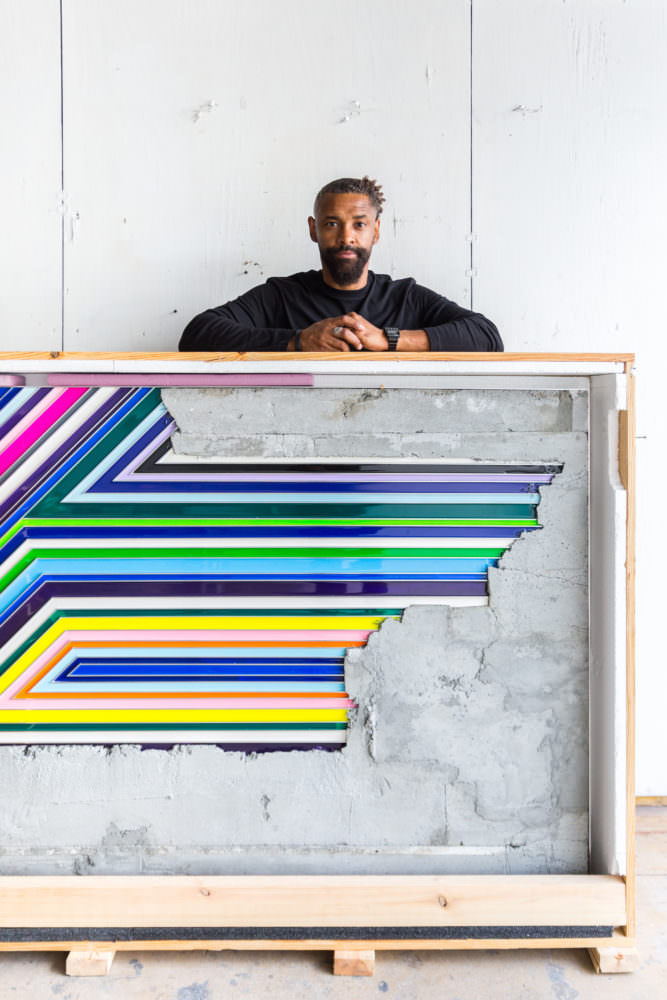 Photos by Anton Kirindongo
Photos by Anton Kirindongo Courtesy of Troy Simmons.
WHITEWALLER: What goes into a project like Surrounded Island, the subject of the exhibition at PAMM?
TROY SIMMONS: It was something I had always been interested in—creating and exploring material. It was the 2008 recession, and I realized, well, if the world is ending, I’m going to go for it and be the starving artist.
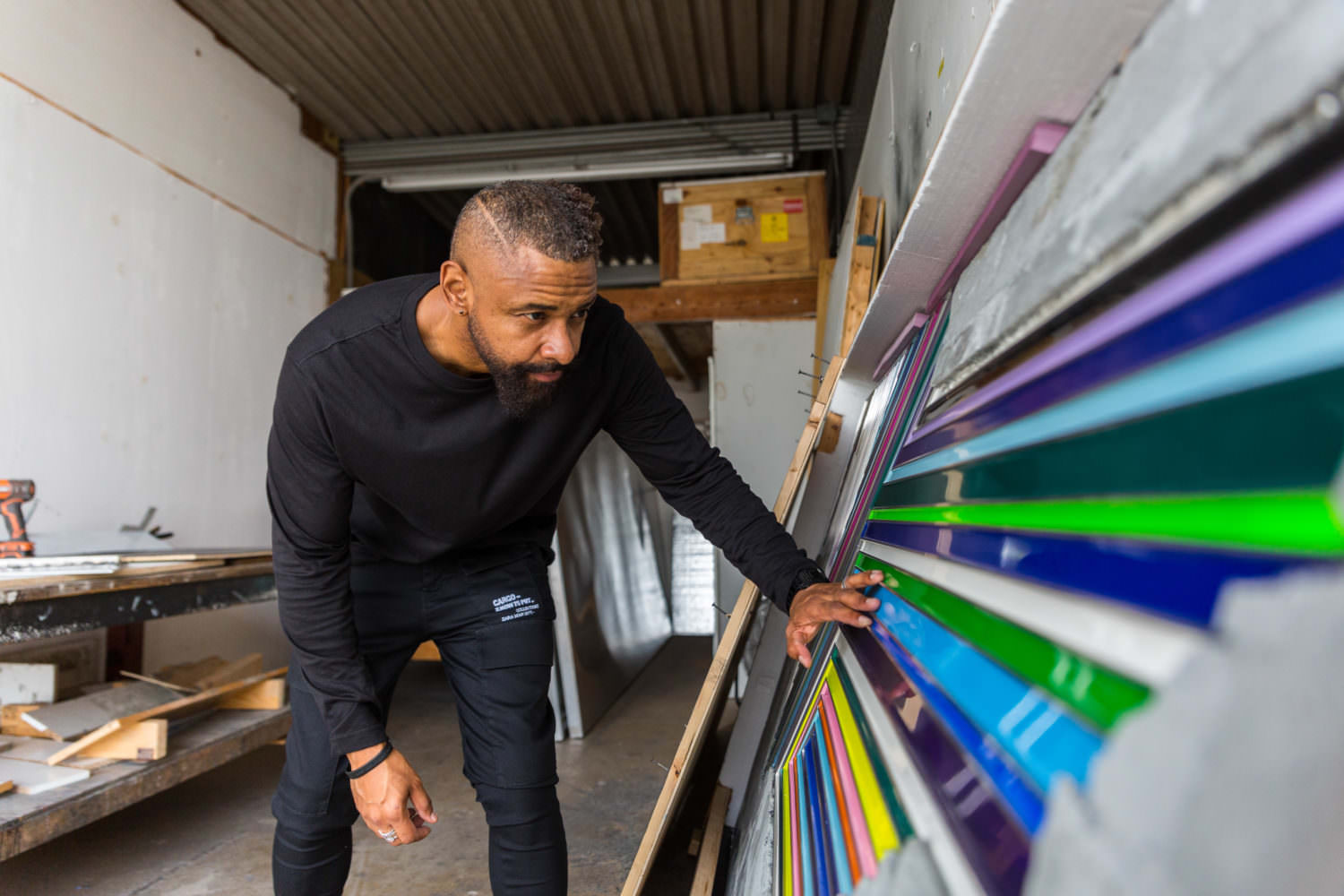 Photos by Anton Kirindongo
Photos by Anton Kirindongo Courtesy of Troy Simmons.
WW: Were you always drawn to working with materials like concrete and steel? Does that come from your background in architecture?
TS: Yes, in the field of architecture, that’s what we use—concrete, steel—those things that we produce, we live in, and make our own.
At the same time, I’ve also always been drawn to natural environments. My mom is a nurse, and I was exposed to a lot of biology books growing up and was fascinated by cellular things. Cells are the structures that build you, just like steel is the structure of buildings.
WW: And can you tell me about your use of color—which is often bright and revealed within these austere materials?
TS: In nature, you have things like, say, a kiwi. From the outside, maybe you wouldn’t eat it, right? But open it up and it’s this vibrant green. To find that, you’ve got to first open it up.
That’s what the color is about. It’s about what’s inside us, what’s behind the hard exterior. It’s what you don’t know until you sit down and experience it.
That’s the message I’ve really tried to portray in my work in general, this inside-outside, this joy of discovery, this breaking out, pushing through, this excitement of the unknown. And I do that through material that I’m familiar with.
WW: Tell us about your collaboration with Goldman Properties.
TS: Jessica came to the studio and asked me how I would introduce my work into one of her buildings. I put together renderings and drawings. We came up with something which is a representation of what I do with my work, and something that can be done with an architectural project.
My work is introduced into the structural elements of the new building—it’s not just an application. So the work is in line with the development of the building and follows building and safety codes.
It speaks to what Jessica Goldman Srebnick and her father are trying to do here in Miami. They understand that our culture can really add life to a neighborhood.






